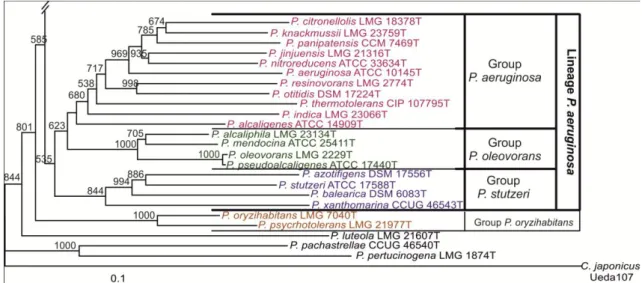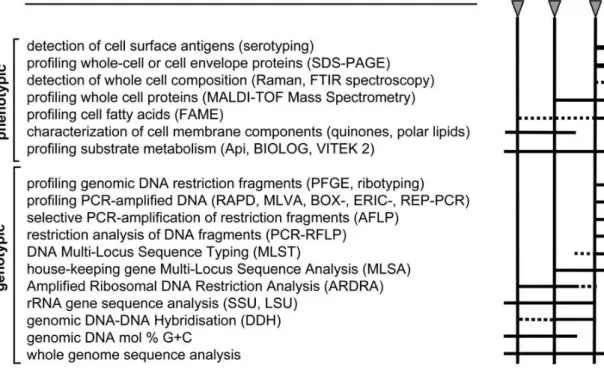Filogenia y evolución de las poblaciones ambientales y clínicas de Pseudomonas stutzeri y otras especies relacionadas
Texto completo
Figure




Documento similar
In this respect, a comparison with The Shadow of the Glen is very useful, since the text finished by Synge in 1904 can be considered a complex development of the opposition
The Dwellers in the Garden of Allah 109... The Dwellers in the Garden of Allah
For the 33 strains with concordant 16S rRNA and MALDI-TOF MS identifications at species level, the percentage similarity of the MLSA concatemer for each strain with respect to
Since such powers frequently exist outside the institutional framework, and/or exercise their influence through channels exempt (or simply out of reach) from any political
Of special concern for this work are outbreaks formed by the benthic dinoflagellate Ostreopsis (Schmidt), including several species producers of palytoxin (PLTX)-like compounds,
In the previous sections we have shown how astronomical alignments and solar hierophanies – with a common interest in the solstices − were substantiated in the
While Russian nostalgia for the late-socialism of the Brezhnev era began only after the clear-cut rupture of 1991, nostalgia for the 1970s seems to have emerged in Algeria
Phylogenetic relationships among “large” shelled species (C. trochulus) were further examined using partial mitochondrial genes and results indicated the existence





